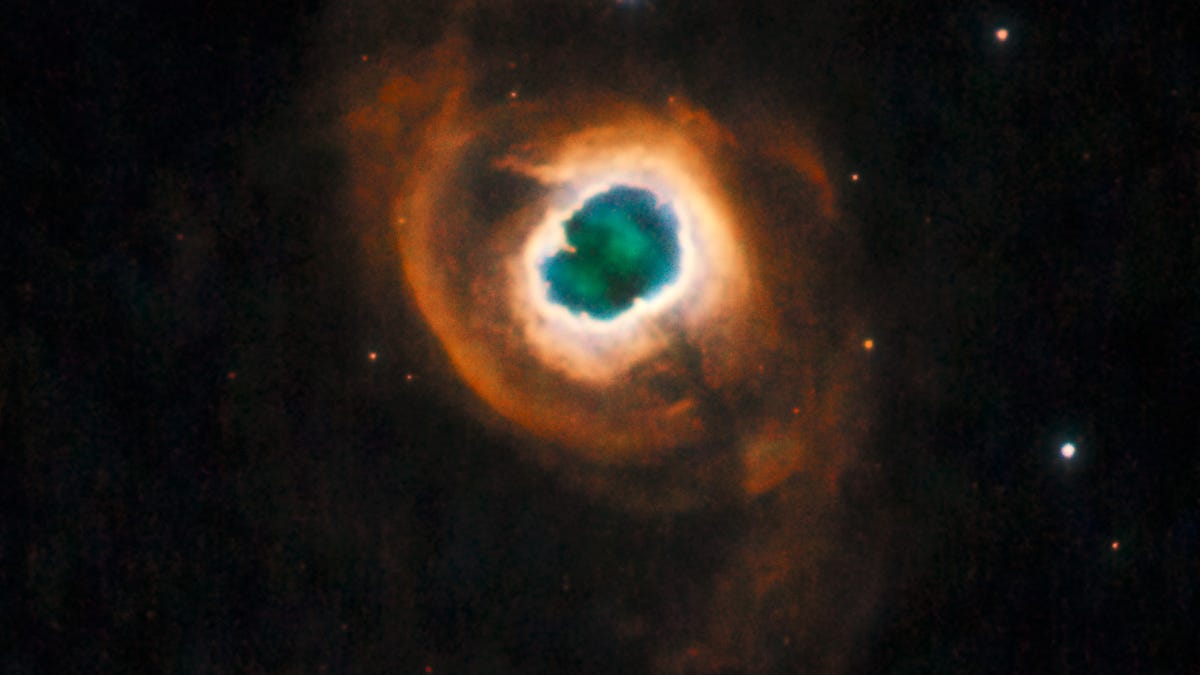Here's what our sun will look like in 5 billion years
Take a peek into the way, way distant future courtesy of a Hubble Space Telescope image showing the last days of a dying star.
If you have a time machine, I can't recommend setting it for 5 billion years in the future. That's because the sun will be riding off into the sunset about that time, having fried Earth in the process. The European Space Agency reminds us of the fate of all things with a fresh look at a fascinating Hubble image of a dying star.
The image comes from the Hubble Space Telescope's Wide Field Planetary Camera 2. The camera worked from 1993 until 2009, but the ESA rereleased the dramatic look at a planetary nebula called Kohoutek 4-55 on Monday. It's a composite of three images taken over the course of two hours.
The nebula is created from the death throes of a star. NASA describes it as the "outer layers of a red giant star that were expelled into interstellar space." The colorful image highlights different wavelengths and gases. Red represents nitrogen gas, green represents hydrogen and blue stands for oxygen.
The star that fed the Kohoutek 4-55 nebula has about the same mass as our sun and is located 4,600 light-years away.
The ESA offers a sobering reminder that our own sun will look a lot like this about 5 billion years from now. "It is expected to behave in the same way as seen here, shedding its outer layers to reveal the burning core, which then becomes a slowly cooling ember known as a white dwarf."
While the Hubble camera that took the images went out of service in 2009, the space telescope has other imaging equipment still generating fascinating views of the universe. An excellent recent example of Hubble's work can be found in this image of a blue bubble-shaped nebula.


